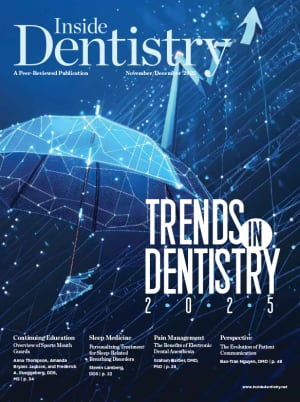The Weakest Link
Figure 1 and Figure 2 | No matter how strong an individual component is, the weakest link of a system is most likely to break. In dentistry, this is often the bond between the tooth and restorative material. All-zirconia crowns exhibiting over 1,000 MPa of tensile strength can fail if the cement is not firmly attached to the restoration and tooth. Similarly, fiber-reinforced posts with excellent tensile strength will loosen if not firmly adhered to the internal root canal surfaces of the tooth.
Dentin bonding agents have achieved the highest bond strengths between the tooth and restorative material. However, there can be challenges to achieving the strongest and most reliable bonds to dentin, including hydrolyzation,1 matrix metalloproteinase degradation,2 bond incomparability,3 and incomplete polymerization.4 A bonding agent with a dual-cured capacity is often required to ensure optimal polymerization. Light-cured dentin bonding agents are available that can be mixed with a separate “dual-cured” activator. This can be a compromise if light never reaches the impregnated tooth surface because light energy is needed to achieve the highest bond strengths. Specifically designed 2-bottle, dual-cure systems allow for the highest bond strengths to occur in the dual-cure mode, even when light cannot reach the agent.
One dual-cure dentin bonding agent can solve these challenges. Bisco’s Universal Primer™ can be used in self-etch or total-etch mode. It has a high polymerization conversion rate, even when not exposed to light. When used with Duo-Link™, a dual-cured resin cement designed to work with Universal Primer, optimal polymerization can be achieved with all-ceramic crowns. Universal Primer resists water permeation and degradation, gives excellent polymerization rates, is compatible with dual-cured cements, and exhibits low film thickness. It is a must for busy practices seating all-ceramic restorations looking for long-term clinical success.
About the Author
Daniel H. Ward, DDS, is a private practitioner based in Columbus, Ohio. He is an active lecturer, educator, and is involved in numerous boards and associations to advance the field of dentistry.
